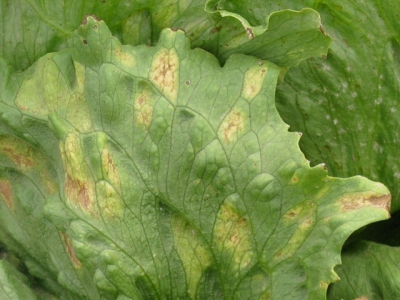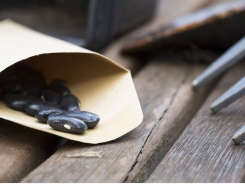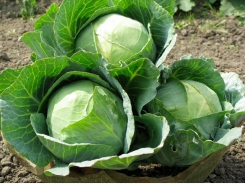Sclerotinia strikes!

SCLEROTINIA disease can overwhelm many crops, especially in wet climates. I experienced a severe outbreak in my bean crop in 2009 during the persistent rainy season. I hadn’t seen the disease in any of my crops for years and I’m uncertain of where the infection started.
The life cycle of sclerotinia
There are various sclerotinia species, but the one that attacks cruciferous crops is Sclerotinia sclerotiorum. This disease has an interesting life cycle. Infected plants have a mass of white fungus that destroys the plant. Inside this mass develop dark-coloured sclerotia, which look like flattened rat droppings. They’re clearly visible when the fungus becomes more advanced.They are the source of the next infection and remain in the soil until cool, wet climatic conditions develop – much the same conditions that cause mushrooms to develop.
From a sclerotium, small mushrooms called apothecia develop, which are a light brown colour and a few millimetres in diameter. When the humidity drops, these mushrooms release tens of thousands of spores into the air, where they’re carried by wind to a host crop. These spores need free water to establish themselves on dead, dying or injured tissue. They can survive for a few weeks while waiting for suitable conditions.
In cabbages they generally end up between the developing head and the cover leaves, where the micro-climate is more favourable for the spores to establish the infection. From here the fungus spreads over the head and can envelop the entire plant. The plant becomes rotten and mushy and the dark sclerotia then appear scattered in the white fungus mass.
The danger here, common to black leg fungus described last week, is that one may only come across the odd plant in the land and consider the damage of little consequence. But it doesn’t require many sclerotia to cause economic damage the next time round, if climatic conditions are favourable. The sclerotia can survive in the soil for three years.
Preventing sclerotinia
The best thing to do when you find these odd infected plants is remove them and bury them away from the land 30cm deep in the soil, or burn them. This requires very little effort and can make a huge difference in the future. Once the infection has occurred, there’s no effective fungicide that I’ve come across that’s economically viable. There are products that can be spayed as a preventative measure against sclerotina, however.
Certain plant varieties are also more susceptible to the disease than others. Usually, varieties with a tougher, more waxy leaf will be less susceptible. This can be clearly seen when two varieties are planted alongside one another when an outbreak occurs.
Be very careful when planting cabbages after sunflowers, as I’ve seen a virtual wipeout of a crop where this was done. If planting sunflowers after cabbages, preventative sprays are recommended, especially after experiencing a period of cool, wet weather.Although this disease is usually not very significant in cruciferous crops, it’s worth making a note of it so that you’re well prepared to avoid an outbreak or prevent the disease becoming established. Every head lost to it is less money in your back pocket.
Có thể bạn quan tâm
Phần mềm

Phối trộn thức ăn chăn nuôi

Pha dung dịch thủy canh

Định mức cho tôm ăn

Phối trộn phân bón NPK

Xác định tỷ lệ tôm sống

Chuyển đổi đơn vị phân bón

Xác định công suất sục khí

Chuyển đổi đơn vị tôm

Tính diện tích nhà kính

Tính thể tích ao hồ



 Conquer cauliflower mosaic virus
Conquer cauliflower mosaic virus  Growing and Caring for Organic Strawberries
Growing and Caring for Organic Strawberries